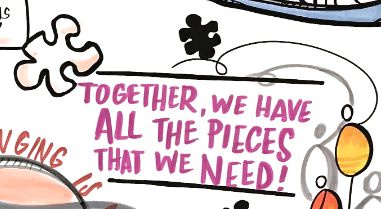Thunder Bay Planning Meeting
March 2020

Mamow Ahyamowen held its in-person planning meeting in Thunder Bay on March 10th and 11th this year. The group was able to reflect on the partnership’s vision, strengths & accomplishments, and the future role of the partnership.
Mariette Sutherland facilitated the day and a half event that was attended by Steering Committee members and support staff of the partnership. Opening and closing prayers and reflections were shared by elder Hammond Lac Seul from Lac Seul First Nation.
We started by examining the current landscape locally, regionally, provincially, and nationally. The landscape is an important consideration when thinking of the partnership and moving our priorities forward.
Looking back – Reflecting where we have been:
We identified accomplishments and strengths of the partnership and how they align with the original vision. A few key themes emerged:
- Development of the mortality analysis: this reinforced the understanding that there is strength in numbers. This is true not just for the analysis, but also for the ability of communities to learn from one another.
- Connections: Partnerships and connections were made and strengthened
- Capacity building in the communities: Regions and communities were able to put the data and information to use
- A Northern voice for sharing and planning: The true foundation of partnership
When we took the time to revisit the partnership’s original vision, we realized that we needed to take some time to reflect on how much the partnership has evolved over the last four years. This evolution necessitated us to re-examine and refine our Vision, Mission and Goals of the partnership. You can find our updated Vision and Mission here.
Looking ahead – Where are we going:
By looking at the current landscape, a list of “implications for actions” emerged. These implications for actions were grouped into four main themes that will guide our future work together. These themes include:
- Continued community capacity building for data-driven proposal writing, evidence-informed planning, and data governance.
- Advocacy and access to additional data sources
- Coordinating data standards and approaches
- Continued collaboration with existing and new partners
These themes that emerged will guide our future work together and only help to strengthen our overall partnership. To view the complete report, please click here.
